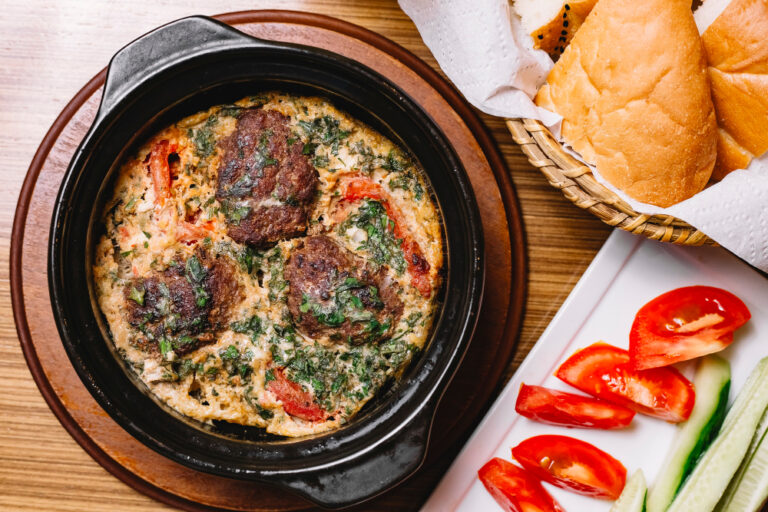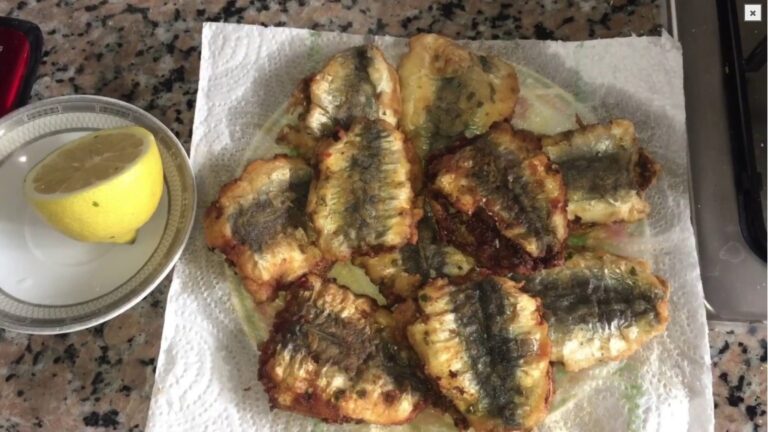
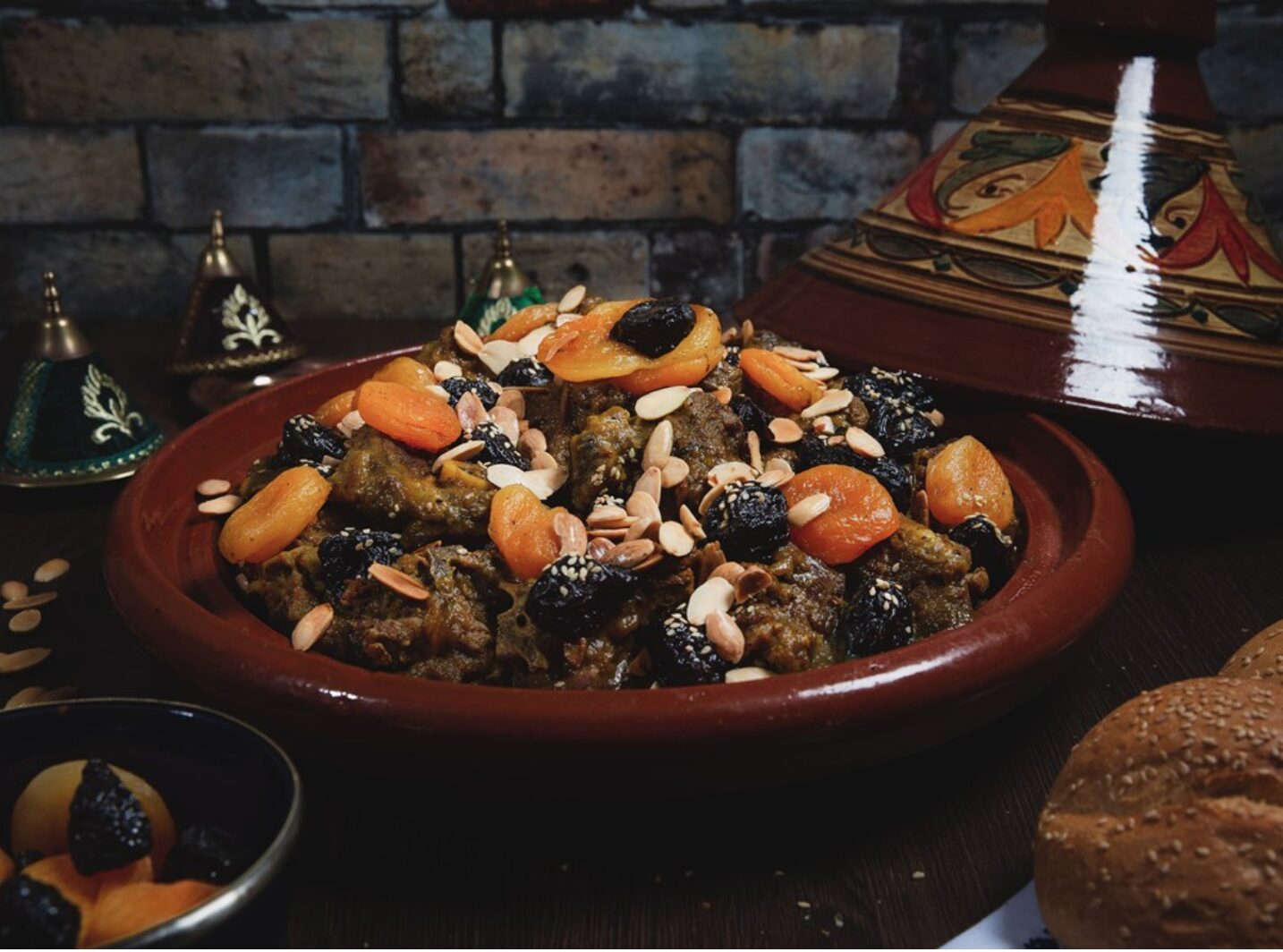
Few dishes capture the essence of Moroccan cuisine as perfectly as Lham Bel Barqouq – Moroccan Meat Tagine with Prunes. This sweet and savory masterpiece combines tender, slow-cooked meat with caramelized prunes, toasted almonds, and a blend of spices that tell the story of Morocco’s cultural richness.
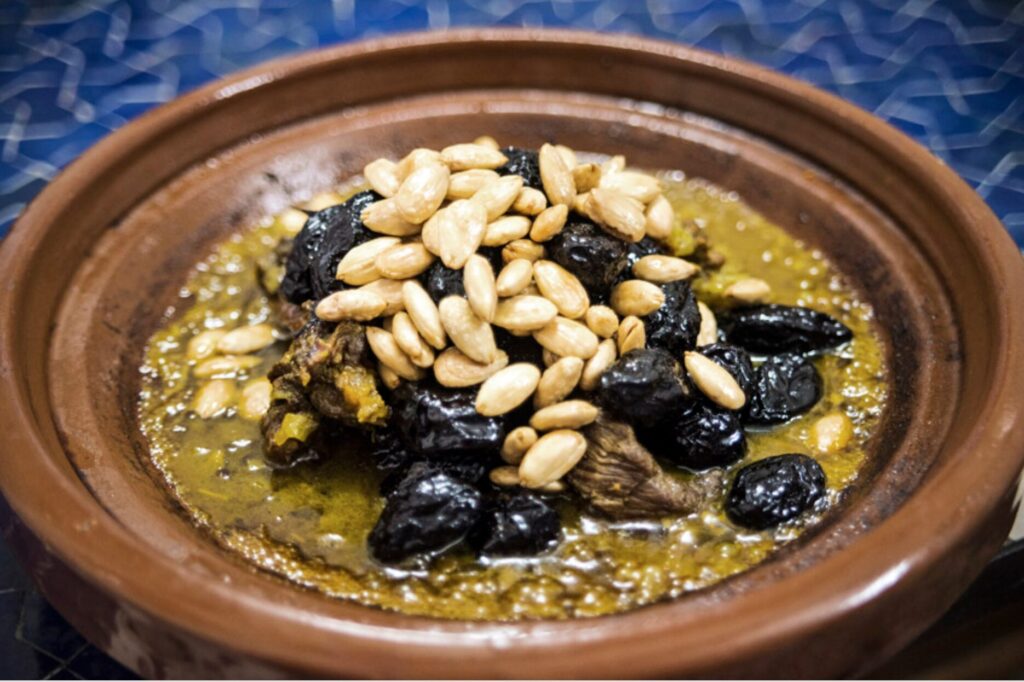
More than just food, this dish represents Moroccan hospitality, where meals are shared, stories are told, and traditions are passed down through generations. Whether enjoyed at a family celebration, a wedding feast, or in a traditional riad in Marrakech, Lham Bel Barqouq is a culinary journey every traveler should experience.
In this article, we’ll explore its origins, why it’s such a beloved dish, cultural tips, and how travelers can experience this iconic Moroccan tagine.
What is Lham Bel Barqouq?
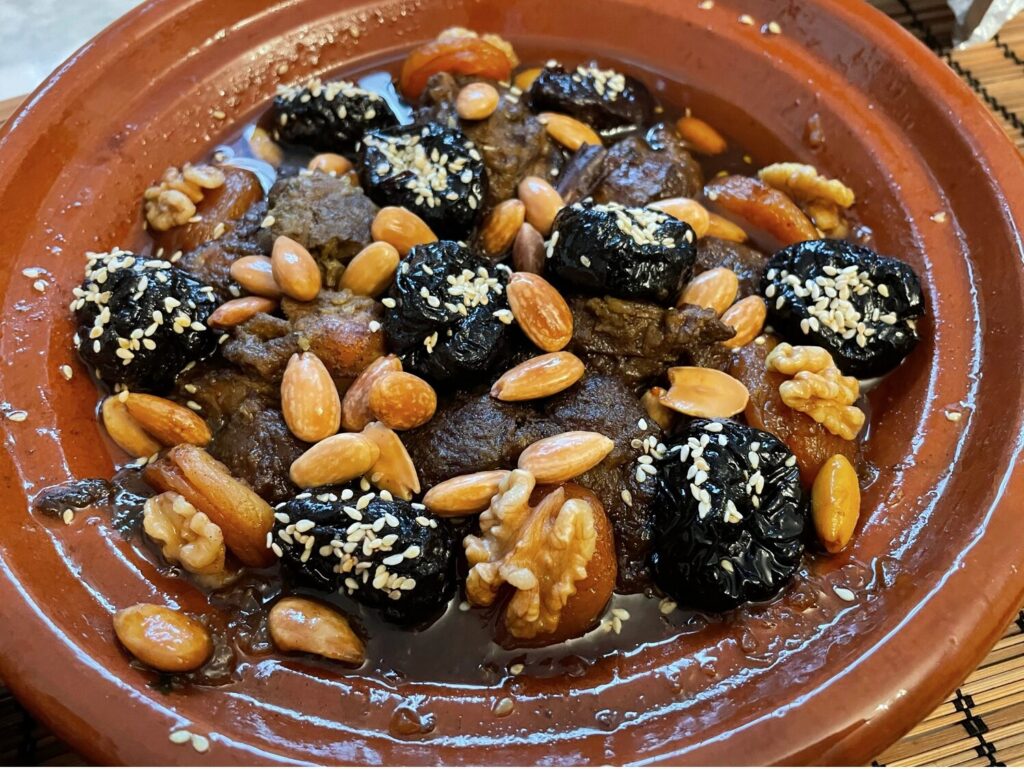
The name Lham Bel Barqouq translates directly to “meat with prunes.” Traditionally prepared with lamb or beef, the dish is slow-cooked in a tagine, a clay pot with a conical lid that retains moisture and enhances flavor.
The flavor profile is a beautiful balance:
- Savory: Meat seasoned with ginger, saffron, cinnamon, and onions.
- Sweet: Prunes simmered with honey, cinnamon, and orange blossom water.
- Crunchy Garnish: Roasted almonds sprinkled on top.
This fusion of flavors is not accidental—it reflects Morocco’s history as a crossroads of Arab, Berber, and Andalusian cultures. Sweet dried fruits and warming spices were introduced through centuries of trade, becoming staples in Moroccan kitchens.
Where to Experience Lham Bel Barqouq in Morocco
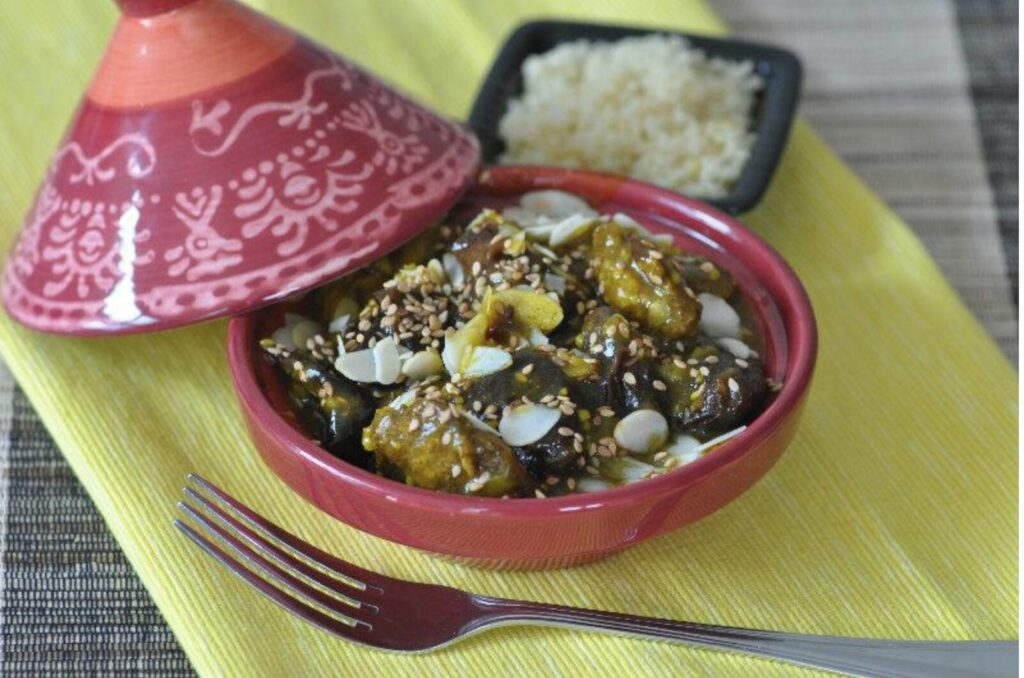
Travelers to Morocco can find Lham Bel Barqouq almost everywhere, but it shines brightest in cultural hubs and traditional celebrations.
Marrakech – A Culinary Capital
In Marrakech, tagines are everywhere, from bustling food stalls in Jemaa el-Fnaa Square to luxury riad restaurants. Many cooking schools also teach visitors how to prepare Lham Bel Barqouq step by step.
Fez – The Soul of Moroccan Gastronomy
Fez, known for its medieval medina and historic culinary traditions, offers authentic experiences. Local families often invite guests to share this dish during special occasions.
Coastal Cities – A Modern Twist
In Casablanca and Rabat, chefs are modernizing the classic recipe, presenting it in fine-dining restaurants while keeping its traditional flavors intact.
Family Homes and Weddings
The most authentic way to taste Lham Bel Barqouq is in Moroccan homes. At weddings, it’s often the centerpiece of the feast, symbolizing prosperity and joy.
Travel Tips and Cultural Insights
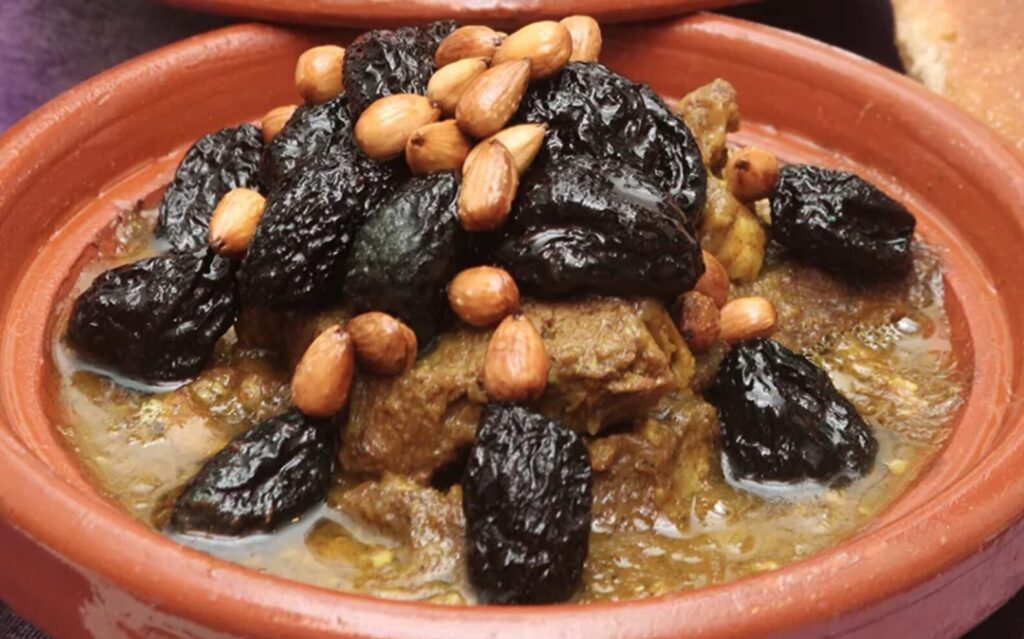
When enjoying Lham Bel Barqouq, it’s important to understand the cultural etiquette surrounding Moroccan dining.
- Eating Style: Traditionally, tagines are shared. Guests gather around a communal dish, eating with their right hand or using bread to scoop the meat and sauce.
- Hospitality: Refusing food in Morocco is often seen as impolite. Guests are encouraged to eat generously.
- Celebratory Dish: While available in restaurants, Lham Bel Barqouq is most meaningful during family events, where food symbolizes togetherness.
- Seasonality: While prunes are available year-round, the dish is especially popular during weddings and religious holidays.
Traveler Stories – A Taste of Tradition
Many travelers recall their first encounter with Lham Bel Barqouq as unforgettable.
One visitor from Spain described attending a Moroccan wedding in Fez where this dish was served on massive platters, surrounded by music and dancing. She noted how the combination of sweet prunes and tender lamb was unlike anything she had ever tasted.
Another traveler, an American food blogger, shared how taking a cooking class in Marrakech and preparing Lham Bel Barqouq herself helped her connect deeply with Moroccan culture. She later recreated it at home, turning it into a family favorite.
These experiences show how food, particularly this iconic dish, bridges cultures and creates lasting memories.
Future Travel Recommendations and Seasonal Insights
For those planning to experience Morocco’s culinary treasures, here are a few recommendations:
- Best Time to Visit: Spring (March–May) and autumn (September–November) offer pleasant weather for food tours and market visits.
- Cooking Classes: Sign up for a class in Marrakech, Fez, or Essaouira to learn how to make Lham Bel Barqouq. It’s a hands-on way to bring Morocco home with you.
- Festivals: During religious holidays like Eid al-Adha, traditional meat dishes, including Lham Bel Barqouq, are widely prepared.
- Pairings: Try it with Moroccan mint tea, fresh bread, or couscous for a full traditional meal.
FAQ – Lham Bel Barqouq
What meat is traditionally used in Lham Bel Barqouq?
The dish is usually prepared with lamb or beef, slow-cooked until tender. Lamb is the more traditional choice for weddings and family gatherings.
Why are prunes used in Moroccan cooking?
Prunes add natural sweetness and a soft texture that balances savory spices, creating the signature Moroccan flavor combination of sweet and savory.
Is Lham Bel Barqouq spicy?
No, it’s not spicy-hot. The spices used (ginger, saffron, cinnamon) are aromatic and warming, not fiery.
Can vegetarians enjoy a version of this dish?
Yes! While the traditional version uses meat, some Moroccan chefs substitute with chickpeas, lentils, or seitan, keeping the prune and almond garnish.
Where can I learn to cook Lham Bel Barqouq?
Many cooking schools in Morocco, especially in Marrakech and Fez, offer classes on preparing traditional tagines, including this dish.
Conclusion
The Lham Bel Barqouq – Moroccan Meat Tagine with Prunes is more than just a meal; it’s a cultural journey into the heart of Morocco. From its fragrant spices to its sweet prunes, every bite tells a story of tradition, hospitality, and celebration.
Whether you taste it at a wedding, in a bustling Marrakech food market, or during a cooking class, Lham Bel Barqouq is a dish that lingers in memory long after the last bite.
-So, if you’re planning a trip to Morocco, make sure this tagine is on your list. To discover more about Moroccan food, culture, and destinations, explore our other guides on Skies of Morocco.

